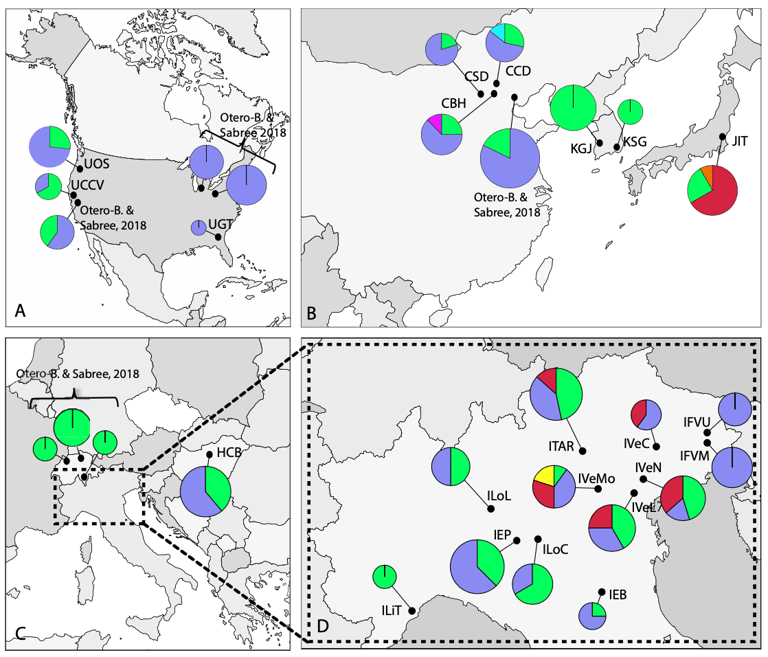Stink Bugs


Martinez-Sañudo I, Perotti MA, Scaccini D, Pozzebon A, Marri L, & Mazzon L. 2020
Co-haplotyping symbiont and host to unravel invasion pathways of the exotic pest Halyomorpha halys in Italy.
Scientific Reports 10,18441.
The brown marmorated stink bug Halyomorpha halys (Stål) is a globally invasive species that harbours the primary bacterial symbiont ‘Candidatus Pantoea carbekii’. In this work, P. carbekii was used as another genetic marker to investigate the biodiversity and biogeographical patterns of this important pest, in native and newly invaded areas, especially in Italy. The correlation between the genetic structure of the symbiont and that of its host was studied through the analyses of one bacterial and one host marker, the putative pseudogene ΔybgF and the mitochondrial gene COI, respectively. As a result, five new P. carbekii haplotypes were identified, and an association pattern between host-symbiont haplotypes was observed. Host species showed higher haplotype diversity than symbiont, which can be expected in a long term host-symbiont association. Populations from the north-eastern Italy showed the highest values of genetic diversity for both markers, highlighting that this particular Italian area could be the result of multiple ongoing introductions. Moreover, some of the symbiont-host haplotypes observed were shared only by populations from north-eastern Italy and native areas, especially Japan, suggesting further introductions from this native country to Italy. Overall, our findings improve the understanding of the potential origin of multiple accidental introductions of H. halys in Italy.